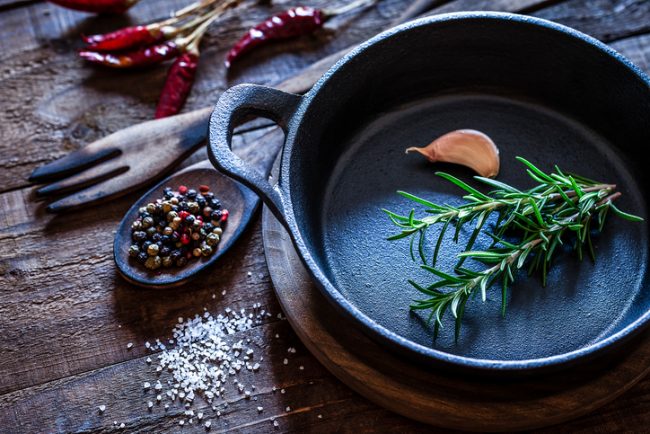Cast-iron cookware, according to several sources, has been around a very long time. The earliest examples come from China during the Han dynasty which lasted through 220 AD. By the 18th and 10th centuries, cast-iron cookware became an important part of daily life in many areas of the world. With new cooking techniques emerging almost daily, this durable, versatile and oven-to-table friendly cookware is making a comeback!
If you are lucky enough to have inherited or come across a vintage Dutch oven or cast-iron skillet, you have scored a treasure. A vintage piece of cast iron that has layers of seasoning cooked into it, giving it that smooth and appealing non-stick finish is a gem.
If you want to add some pre-seasoned new cast-iron cookware to your kitchen there are many companies offering high-quality options at affordable prices.
New or vintage, there are a few important rules to follow to ensure your cookware is kept clean, rust-free and well-seasoned to last for years to come.
Do’s & don’ts
DO: Immediately clean, rinse and dry cookware by hand (cast iron can easily rust). If you need to use a small squeeze of soap and a soft scrub to get off the food, go ahead.
DON’T wash pan in dishwasher.
DO: Dry your pan thoroughly after cleaning. Place pan on high heat on your stovetop or in a preheated oven, turned upside down for about an hour until it is dry.
DON’T soak pan in water or leave cookware sitting with crusted food inside.
DO: re-season cookware after every use by using a paper towel or clean cloth to rub a thin coating of vegetable oil over the entire surface area. (You can also rub a little on the outside.)
DO: Store pan in dry place. If you have several pans, stack them inside one another using a clean piece of paper towel layered in between.
Follow-up tips
- If you still have a few small bits stuck on the pan, try the following method: Create a paste using kosher salt and a few drops of water. Use a dry paper towel or clean kitchen cloth to dislodge food pieces. Pour a small amount of water in pan and cook over high heat to loosen food. Use a firm metal spatula and scrape off food while pan is hot.
- If your cookware has some rusty spot, don’t despair! Use a fine steel wool pad to remove rust. A 50/50 combination of white vinegar and water helps to make this job easier. After the rust is gone, follow the steps above after every use.
- Cast-iron cookware is perfect for high-heat cooking. Use these pieces on the stove, in the oven or over a campfire. Keep in mind that over time your pan will build up many layers of seasonings. Eventually the surface will become almost non-stick, requiring less fat from cooking oils.

